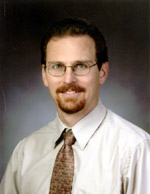Serendipity35 May Be Temporarily Offline

Tim is playing some games with our servers the next few days, so this blog may be intermittently down and out.
Don't worry. We'll be back.
Read a book.
Take a walk outside.

Tim is playing some games with our servers the next few days, so this blog may be intermittently down and out.
Don't worry. We'll be back.
Read a book.
Take a walk outside.
On April 16, 2007, my oldest son was a senior at Virginia Tech. I watched the coverage of the mass shooting that day on TV and I was on the phone with my son at the same time. He was safe.
The first shooting was in his freshman dormitory. The building where he had most of his classes in engineering was where the other shootings occurred. He called his mom as soon as he heard about the shootings. He had a class in Norris Hall at 10:30 and planned to be there at 9:30 to work on his senior project. But, he was waiting for a call from his girlfriend who had gone for a job interview. And there had been a bomb scare earlier that week on campus. He waited.
As the tragedy was unraveled, I became less supportive of the university's response to the events that day. The campus should have been shut down after the first shooting. Whatever luck or other explanation you have for my son deciding to wait before going to campus to work on his senior engineering project, he wasn't in Norris Hall. His classmates were there. His professor was there.
Now, six years later, I still think about Kevin Granata, his professor and project adviser in the Engineering Science and Mechanics department. They were working on muscle and reflex response and robotics. Dr. Granata is known for his work on movement dynamics in cerebral palsy. Dr. Granata was one of the thirty in Norris Hall that was killed.
 I never met Professor Granata, but I know that he was helping my son fill some gaps in his software skills by working with him outside class. He was his adviser for his capstone senior design project team that was designing a biomimetic walking robot.
I never met Professor Granata, but I know that he was helping my son fill some gaps in his software skills by working with him outside class. He was his adviser for his capstone senior design project team that was designing a biomimetic walking robot.
On that day, Professor Granata heard the shooting from his office on the third floor and escorted about twenty students from a classroom to his office. After they were locked in, he went downstairs with another professor, Wally Grant, to investigate. Both teachers were shot. Professor Grant was wounded and survived, but Dr. Granata died from his injuries. The students locked in his office were all safe.
Kevin Granata was 45 years old. He was married with three children.
My son was never able to go back into the building. He couldn't complete his project. He didn't attend the graduation ceremonies. He wasn't able to follow up on contacts that he had discussed with Professor Granata about grad school and jobs.
My wife and I are both teachers and that day hit us very hard. The Columbine High School shootings on April 20, 1999 made both of us question being in a classroom. I left full time teaching in a public school two months after Columbine. My wife left teaching a few years later, before the Virginia Tech day.
When the shootings occurred at Newtown, Connecticut in December 2012, it all came back to us once again. We have always been proud to be teachers. We both would like to believe we would be a teacher like Kevin Granata or all those other teachers in school shootings who tried to protect their students.
More about Kevin Granata on the Virginia Tech remembrance site and on Wikipedia.

It was on this day in 1754 that the word "serendipity" was first coined. It's defined by Merriam-Webster as "the faculty or phenomenon of finding valuable or agreeable things not sought for." It was recently listed by a U.K. translation company as one of the English language's 10 most difficult words to translate. Other words to make their list include plenipotentiary, gobbledegook, poppycock, whimsy, spam, and kitsch.
"Serendipity" was first used by parliament member and writer Horace Walpole in a letter that he wrote to an English friend who was spending time in Italy. In the letter to his friend written on this day in 1754, Walpole wrote that he came up with the word after a fairy tale he once read, called "The Three Princes of Serendip," explaining, "as their Highnesses travelled, they were always making discoveries, by accidents and sagacity, of things which they were not in quest of." The three princes of Serendip hail from modern-day Sri Lanka. "Serendip" is the Persian word for the island nation off the southern tip of India, Sri Lanka.
The invention of many wonderful things have been attributed to "serendipity," including Kellogg's Corn Flakes, Charles Goodyear's vulcanization of rubber, inkjet printers, Silly Putty, the Slinky, and chocolate chip cookies.
Alexander Fleming discovered penicillin after he left for vacation without disinfecting some of his petri dishes filled with bacteria cultures; when he got back to his lab, he found that the penicillium mold had killed the bacteria.
Viagra had been developed to treat hypertension and angina pectoris; it didn't do such a good job at these things, researchers found during the first phase of clinical trials, but it was good for something else.
The principles of radioactivity, X-rays, and infrared radiation were all found when researchers were looking for something else.
Julius Comroe said, "Serendipity is looking in a haystack for a needle and discovering a farmer's daughter."
Wiktionary lists serendipity's antonyms as "Murphy's law" and "perfect storm."